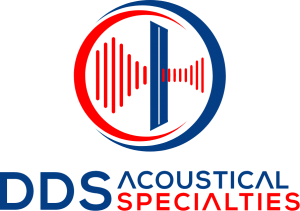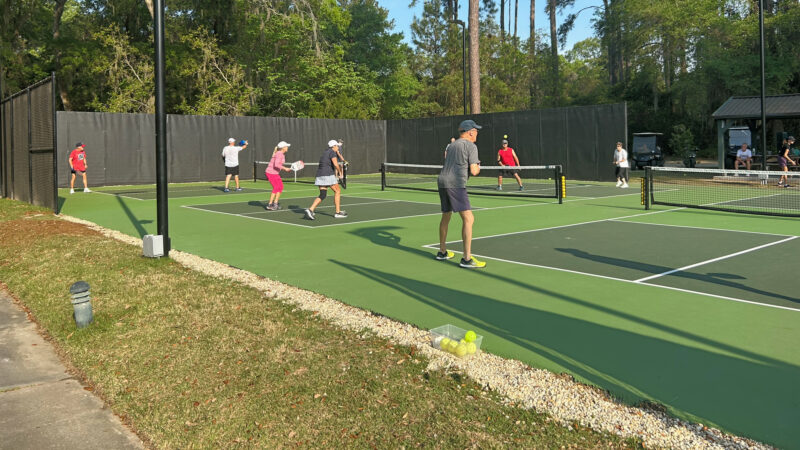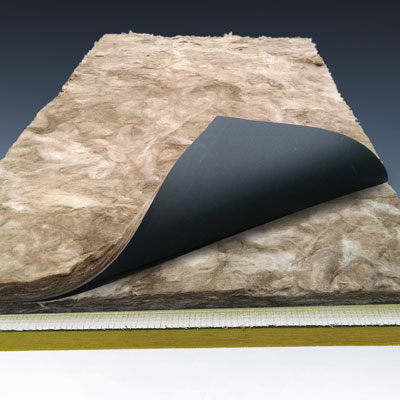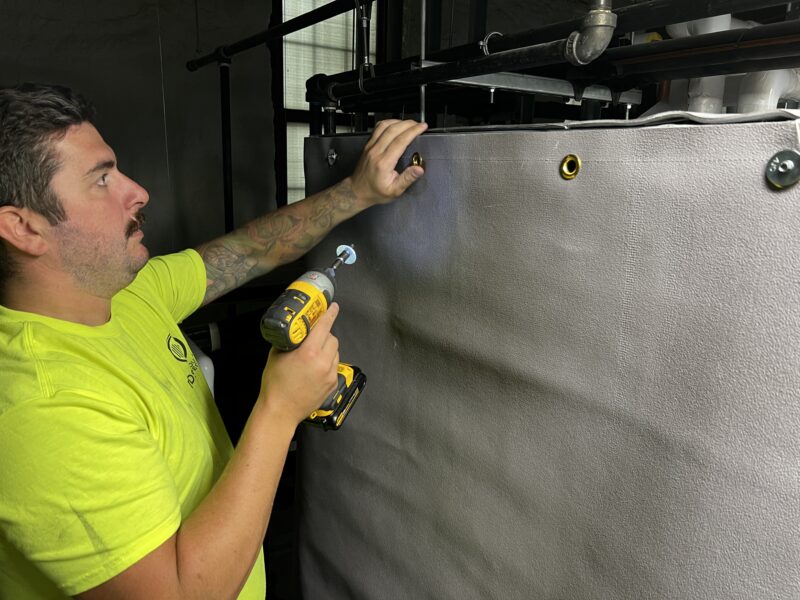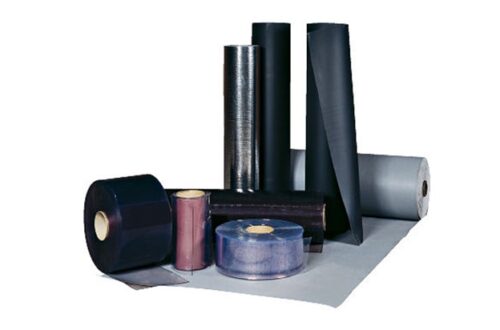99% of the time MLV is included with the Gypsum Wall Board (GWB) spec. Unless there is a different scope for it to be included.
Mass Loaded Vinyl Noise Barrier
Mass Loaded Vinyl (MLV) is a highly effective material renowned for its exceptional noise reduction capabilities. With its versatility, durability, and outstanding soundproofing properties, MLV has become the go-to choice for residential, commercial, and industrial applications.
What is Mass Loaded Vinyl?
Mass Loaded Vinyl (MLV) is a specialized material designed for noise reduction. It consists of a dense layer of vinyl embedded with minerals like barium sulfate or calcium carbonate. This unique composition gives MLV its impressive mass, allowing it to effectively block sound waves. Available in different thicknesses, weights, and sizes, MLV can be tailored to suit various noise control needs.
The industry standard MLV is 1/8″ thick, 1lb per square foot and has an STC Rating of 26. 1/2lb and 2lb psf options are also available at an STC rating of 21 and 31 respectively.
MLV is often used as a component in various noise control products such as acoustic curtain panels and noise barrier ceiling tiles and covers.
Standard vs. Reinforced Mass Loaded Vinyl
MLV is available in a standard and a reinforced option. The standard option is most often used in construction applications of walls and ceiling. The reinforced product is tear, UV, and weather resistant and is suitable for outdoor noise control applications such as Pickleball, Generators, and other outdoor mechanical equipment or construction.
Benefits of Mass Loaded Vinyl
Superior Noise Reduction: MLV’s exceptional soundproofing properties enable it to significantly reduce airborne noise transmission. By adding mass and dampening vibrations, it effectively blocks sound, creating a quieter and more comfortable environment.
Easy Installation: MLV is user-friendly and can be easily installed on walls, floors, ceilings, and other surfaces. It can be cut, trimmed, or layered to fit specific requirements, making it a versatile and convenient solution for noise control.
Wide Range of Applications: MLV finds extensive use in diverse settings, including homes, offices, studios, theaters, and industrial facilities. Its versatility allows it to effectively address noise issues in various environments, improving the overall acoustic experience.
Effective Noise Reduction Applications
Residential: MLV is an excellent choice for soundproofing walls, ceilings, and floors in residential spaces. By reducing noise from neighboring rooms, traffic, or household appliances, it creates a peaceful sanctuary, ideal for bedrooms, home theaters, or relaxation areas.
Commercial: Offices, conference rooms, and hotels can greatly benefit from MLV. By minimizing disruptive noises, it creates a serene working or resting environment, promoting productivity and customer satisfaction.
Industrial: MLV is highly effective in controlling noise generated by heavy machinery, manufacturing equipment, or power generators. By mitigating noise pollution, it ensures employee safety and contributes to a healthier work environment.
Mass Loaded Vinyl (MLV) is a proven and reliable material for noise reduction. Its remarkable soundproofing capabilities, easy installation, and wide range of applications make it an optimal solution for residential, commercial, and industrial settings. Invest in MLV to transform your space into a tranquil haven, free from the disturbances of unwanted noise.
FAQ's
Frequently Asked Questions
I am an architect, where should I specify Mass Loaded Vinyl?
Is there a cut tolerance around electrical boxes and other wall penetrations?
A 1/8″ tolerance is acceptable
How is MLV attached to studs?
We have a guide on how to install MLV here >>
The product can be installed using the same drywall screws or it can be nailed to the studs first.
Does MLV ever create vapor transmission problems?
In our experience we have never had an issue or been made aware of any water vapor issues when using the product as instructed.
Do I need to put MLV on both sides of a wall?
Depending on your goal, you may want to use MLV on both sides of a wall. In most cases for standard 2×4 stud walls with a layer of MLV you can get about a STC 50 rating.
